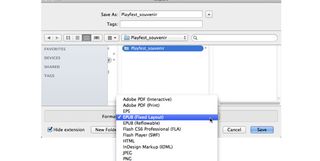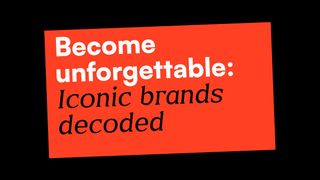In this three-part series on ebook production, we are going to take a broad look at three ways ebooks are produced. In this first part we'll look at creating an ebook with InDesign CC.
Background

Publishing has changed a whole lot over the last few years. What's more, it's going to keep changing for the foreseeable future, so there'll be no getting lazy any time soon. Sorry 'bout that. Getting up to speed with these changes, and keeping up with them, is a challenge.
Those in publishing are likely familiar with the annual Book Expo America, aka BEA. It's the largest convention for the book publishers in the US (though dwarfed compared with conventions abroad). At BEA 2011 we saw the beginnings of critical mass conversion to the ebook format.
The following year felt like a step up from there, with nearly everyone having made the leap. Now in 2014, a quick glance at Amazon or Barnes & Noble shows most books offering ebook options.
Troubling issues
But back in 2011 I noticed a troubling issue: there was almost no way for a designer to publish to this new ebook format. While our go-to publishing package, InDesign, offered a way to export ebooks, it was rather basic and without much more than bare-bones formatting.
Even then, there were many things that would have been needed in a professionally published ebook that would require additional work post export from ID. Such post-export work is referred to as "cracking" the ebook, and would include coding of HTML, CSS, XML and other attributes. All of this was generally beyond many book designers and DTPers.
(Without getting overly technical, ebook formats are essentially based on the same components that a website is, so there is a great deal of overlap. You could think of it as an encapsulated website, much the way an EPS file is simply an encapsulated post-script file.)
But in 2011, Adobe was busy taking its first steps to remake InDesign for the next generation of publishing. InDesign 5.5 came out that same year with significant enhancements to its digital publishing tools. Each version since has brought significant additions to digital publishing, and underscores Adobe's commitment to the industry's future workflow needs.
Need to know

There are perhaps two general things you need to understand about e-publishing with InDesign today. The first is that even with Adobe's hard core commitment, there are probably going to be things that it can't do for you. There are still some things that will require "cracking" the exported ebook file. Adobe acknowledges this, and reinforces their commitment to minimizing your need to do this.
The second thing to understand is that with the release of InDesign CC 2014, Adobe has added support for what is called "Fixed Layout ePUB Format". This has been a much requested function and is very unlike the more common "Reflowable" format of ePUB 2 and 3, which have free-flowing text and graphics. (Don't let the term "anchored graphics" in reference to the reflowable format confuse you. It refers to graphics being anchored to a specific position in the text, not anchored to a specific page of the document.)
Traditional layout
The new Fixed Layout option will allow an InDesign document to be layed out and designed much the way we would with a traditional printed book, without the expectation of content reflowing. Obviously this is a big boon for any designer, especially those who are used to traditional non-reflowing design esthetics. Essentially, designing for a fixed layout ebook is a lot like designing a product that might have instead gone out to PDF.
The difference between the two is under the hood. And PDF's are not quite ideal for ebook distribution, just as an ebook of any sort would not easily replace what PDFs are used for. Annemarie Beliard, Product Marketing Manager for Adobe InDesign and Digital Publishing, put it this way, "Fixed Layout EPUB is somewhat like a PDF, except the text is live and searchable, and fixed layout supports interactivity that the PDF format does not."
The downside
There is a downside to all this joy, however. The reason most ebooks are of the reflow variety is that it allows it to be viewed on everything from a desktop, to you iPad or Kindle, your new phablet reader, or even your tiny smartphone.
Fixed designs can only scale an entire page up and down in size (just like with a PDF), and the reader on a smaller device will be doing a lot of panning and scrolling. So fixed designs are best used for content that would really benefit from it, like children's books and coffee table style books, and ebook format magazines.
Most tablets today are in the 8-10" range. So designing a fixed document would likely mean creating something that is visually pleasing and easily readable on any unit in that range. Your design with uniformly scale larger or smaller depending on the screen size. Hopefully the trend towards larger tablets will also continue, and someday soon it might be common for families to have 12" and larger tablets to view various niche luxury publications.
Some nuts & bolts

One of the problems in giving you a real tutorial is the vast scope of this subject. We all wish it wasn't so complex, but at this point it still is. And it's a moving target with each iteration of InDesign changing how things are done, as well as what can be done.
We are still in the throws of moving from ePub v.2 to v.3 now as well. That said, here are some pointers to keep in mind when creating a reflowable ebook, some ideas to think about, and some resources to explore further.
- The articles panel: Some versions ago it was required that the main text of a book all be linked together. But since the introduction of the Articles Panel, this is no longer the case. You can use it to decide the inclusion/omission of any articles, as well as their order.

- Anchored graphics: Graphics can be anchored to the text by simply pasting the art inline where you want it. In more recent versions of ID you can also drag on the "anchor icon" and release over the insertion point in the text.
- All about styles: Consistently apply Character Styles and Paragraph Styles to all the text. In other words, all attributes should be applied via a style, rather than directly. This information is used in the ebook to control the look of your text. Nested styles are not supported, so if you have a document set up that way you will need to do a Find/Change to swap those out for non-nested attributes. Note that these controls also let you set a paragraph's Tag attribute, ie. H1, H2, etc.

- No masters: ebooks do not recognize items from a Master page. So don't expect to see those items show up.
- Building chapters: Previously ebooks couldn't recognize text box or page breaks, so we needed to create a separate ID document for every chapter and then assemble it all together. This is no longer needed, and chapters can be designated in a number of ways. The most popular seems to be with "Paragraph Style Export Tags", found in the Paragraph Style menu.
- Choose your own version of ePub: Now with the ePub 3 standard increasingly well adopted in the industry, and supported by readers, there are fewer reasons to fall back to version 2. ID exports more design elements to the CSS file of ePub 3 exports, and Fixed Layout is only available in version 3 as well.
Resources
- For more details on building an ebook, check out Part 1 and Part 2 of these videos. They're a bit dated, but contain good information as a starting point.
- This page gives us a listing of many good links worth reading:
- And here is a PDF specifically on creating an ebook for distro as an iBook.
- Here are two up-to-date bits from Adobe. Though they are really short teasers, they do give you an overview of what can be done. On Fixed-Layouts and On Adobe's Digital Publishing System (DPS).
- One last item to mention: Interactivity. While ID has many interactive elements and controls, much of this was designed for either PDFs or export to SWFs. But we are seeing the logical progression of these features being included in ebooks more and more, as was noted in the last two video blurbs.
- Here are three last links worth looking at. The first talks about interactive content in your ebook projects.
- The next one breaks down the changes and features between InDesign CS6 and CC.
- And the third is a good resource page hosted by Digital Book World.
As you can see, the subject is so large that it can be hard to keep up-to-date. If you find good additions to this list, please feel free to enlighten us all and post it in the comments sections.
In part two tomorrow, we will explore other options available to creating your digital masterwork. And in part three, we will look at the fascinating challenges involved with trying to bring an old out of print book back to life as an ebook.
Words: Lance Evans
Lance Evans is creative director of Graphlink Media.




